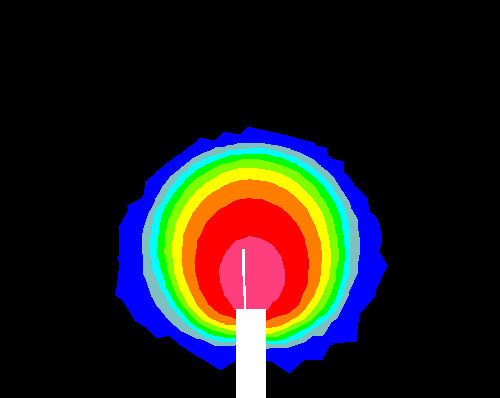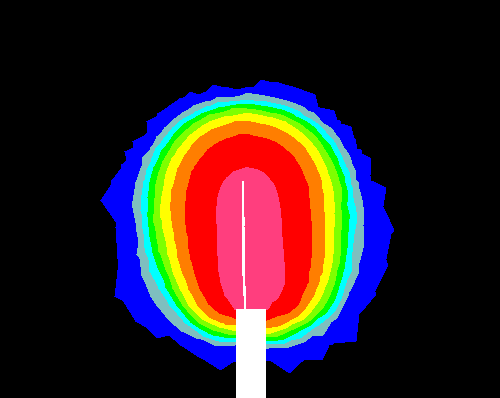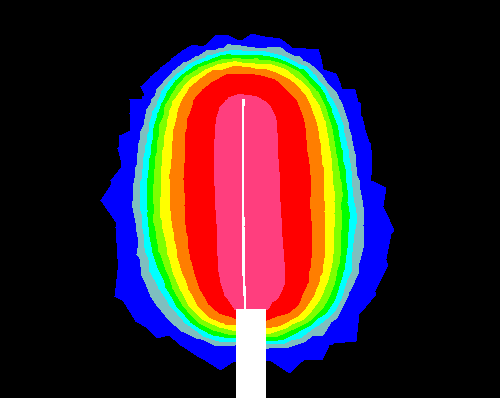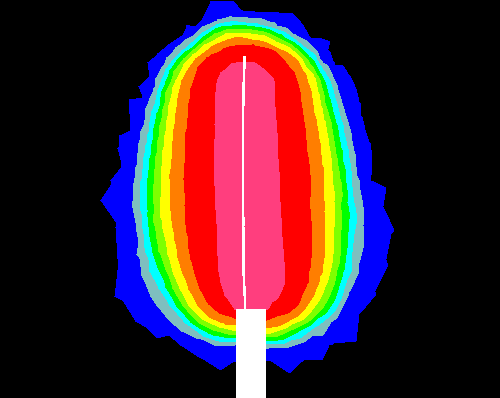









Short course on
NUMERICAL MODELING
of
DEFORMATION AND FAILURE
of
MATERIALS
taught by
Department of Structural Mechanics
Prague, 15-19 June 1998
Milan Jirásek
Laboratory of Structural and Continuum Mechanics
Department of Civil Engineering
Swiss Federal Institute of Technology at Lausanne
and organized by
Faculty of Civil Engineering
Czech Technical University
ATTENDANCE
The course was attended by 27 registered participants (undergraduate and graduate students, university teachers and researchers, and private consultants).
TIME SCHEDULE
Morning sessions: 9:00-12:00
Afternoon sessions: 14:00-16:00
The course took place on the campus of the Czech Technical University in the building of Civil Engineering, Thákurova 7, Praha 6 - Dejvice, room No. B-366.
MAIN TOPICS
1) Introduction: Field equations and discretization by finite elements, solution strategies for nonlinear problems, general overview of material models and constitutive frameworks.
2) Flow theory of plasticity: Yield conditions, flow rules, hardening/softening laws, consistency condition, tangential stiffness.
3) Computational plasticity: Stress return algorithms, algorithmic stiffness.
4) Continuum damage mechanics: Concept of damage, scalar/tensorial characterization of damage, damage evolution laws, damage deactivation upon crack closure, computational aspects.
5) Smeared crack models: Concept of cohesive crack, fixed/rotating crack models, stress locking (spurious stress transfer), multiple crack models, size-adjusted softening modulus.
6) Microplane models: Schmid's law, single crystal plasticity, static and kinematic constraint, microplane stress-strain laws, relation to plasticity and damage.
7) Strain localization I: Standard strain-softening continuum, ill-posedness and pathological mesh sensitivity, basic types of localization limiters.
8) Strain localization II: Nonlocal integral models based on damage and plasticity, comparison of nonlocal formulations, numerical aspects, alleviation of mesh-induced directional bias.
9) Discrete crack models: Hillerborg's fictitious crack model, elements with embedded discontinuities, comparison of formulations, combination with continuum models, nonlocal version.
10) Thermodynamic approach: Basic notions and laws of thermodynamics, development of constitutive models based on the thermodynamic formalism.
INSTRUCTOR

|
(Milan.Jirasek@epfl.ch) graduated from the Czech Technical University in 1985. His doctoral dissertation, supervised by Prof. Zdenek P. Bazant at Northwestern University, focused on fracture and damage of quasibrittle materials such as concrete. Currently he works as a Research Engineer at the Laboratory of Structural and Continuum Mechanics of the Swiss Federal Institute of Technology at Lausanne (EPFL), where he develops advanced numerical models for nonlinear fracture mechanics. He is the author of more than 30 papers published in international journals and in conference proceedings. He has experience with teaching at both the undergraduate and the graduate level in the Czech Republic, United States, and Switzerland. |
FUTURE PLANS
It is planned to organize a sequel to the course in summer 1999 or 2000. Possible topics include:1) Advanced solution strategies in nonlinear mechanics: Quasi-Newton methods, line search, indirect solvers, convergence in localization problems, bifurcation analysis.
2) Ideal elastoplasticity: Limit and shakedown analysis, upper and lower bound theorems, methods of linear programming.
3) Advanced elastoplasticity: Hardening and softening, nonassociated flow, multi-surface plasticity, local uniqueness.
4) Stability and uniqueness: Material stability, local and global uniqueness, diffuse and localized failure, acoustic tensor.
5) Anisotropic damage models: Microplane damage models, models of Chaboche and Ortiz, evolution laws, damage deactivation.
6) Combined models: Composite yield surfaces (model of Feenstra), combination of damage and plasticity (model of Oliver et al).
7) Nonlocal damage and plasticity: Integral and gradient formulations, computational aspects, comparison of approaches, tricky points.
8) Effect of loading rate: Viscoelasticity and viscoplasticity, rate-dependent damage and smeared-crack models, cyclic loading and fatigue.
9) Large-strain plasticity: Basic notions of large strain mechanics, types of large-strain plasticity theories, simple models based on the multiplicative decomposition of deformation gradient.
10) Alternative approaches to plasticity: Formulation in strain space, deformation theory of plasticity, hypoplasticity.
This advanced course shall be taught in English. For more information please contact Milan Jirásek at Milan.Jirasek@epfl.ch.